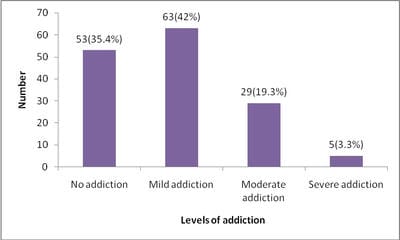Prevalence of addictive internet use and its correlates among urban school students in Tamilnadu, South India – a cross-sectional study
Daya A P.1, Krishnaleela G.2*
DOI: https://doi.org/10.17511/ijphr.2018.i2.02
1 Praveena Daya A, Assistant Professor, Department of Community Medicine, Tirunelveli Medical College, Tirunelveli, Tamil Nadu, India.
2* Krishnaleela G, Associate Professor, Department of Community Medicine, Thoothukudi Medical College, Thoothukudi, Tamil Nadu, India.
Background: Use of Internet has drastically increased in the last decades. Despite of the advantages, use of it can lead to addictive behaviours that can affect various domains of a person’s life like physical, social, mental and financial wellbeing. Materials and Methods: A cross-sectional study was conducted to assess the prevalence of Internet use and its correlates among 150 urban school students in 13-15 years age group in a selected school in Tirunelveli district, Tamilnadu, South India. Study was conducted using apredesigned, pretested questionnaire part of the questions were retrieved from Young’s 20 item Internet Addiction Test. Results: Among the 150 study participants, 53 (35.4%) are not addicted to use of internet, 63 (42%) are in mild addiction level, 29(19.3%) are in moderate addiction level and 5(3.3%) comes under severe addiction level, 43.4% were using internet for social networking and with regard to duration of use of internet, 17% were using internet for duration of 1-2 hours a day and 6% use it for more than 2 hours a day. Conclusion: The current study shows a higher level of internet use and addiction to it among students. Need to enhance the awareness regarding the consequences of these technologies to students.
Keywords: Internet, Addiction, School students, Urban schools
| Corresponding Author | How to Cite this Article | To Browse |
|---|---|---|
| , Associate Professor, Department of Community Medicine, Thoothukudi Medical College, Thoothukudi, Tamil Nadu, India. Email: |
Daya AP, Krishnaleela G. Prevalence of addictive internet use and its correlates among urban school students in Tamilnadu, South India – a cross-sectional study. Public Health Rev Int J Public Health Res. 2018;5(2):60-64. Available From https://publichealth.medresearch.in/index.php/ijphr/article/view/83 |


 ©
© 